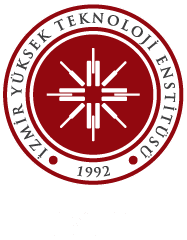Controlling charge transport, spin transport and superconductivity in a two-dimensional materials by the electric field effect
Speaker : Barbaros Özyılmaz
Center for Advanced 2D Materials (CA2DM), National University of Singapore (NUS)
Place : Dept. of Physics Seminar Room
Date & Time: 7 June 2017 – 11:00
Abstract
The complex physics of a system with strong electron-electron interactions can be studied by studying its properties while tuning an external electric field applied to the system (the electric field effect). Indeed, complete electric-field control of many body states in strongly correlated electron systems would be of great advantage in future condensed matter research. Similarly, the electric field control of charge and spin transport is crucial for many novel device concepts in the field of nanelectronics and spintronics. In contrast to bulk materials, two-dimensional material are inherently thin and thus, avoid or at least sufficiently minimize electric screening. However, up until recently the choices of 2D materials for such studies was constrained to air-stable crystals. The recent progress in encapsulating 2D materials with atomically thin boron nitride (BN) in an inert gas environment has largely removed this constrain. In my talk I will give three examples. First, I will start with octahedral titanium diselenide (1T-TiSe2), which reveals a charge-density wave and superconductivity in its phase diagram [2]. Next I will discuss experiments with Au intercalated van der Waals heterostructures of graphene and hexagonal boron nitride. Pristine graphene has negligible spin-orbit coupling (SOC). However, magneto-transport studies suggest that such intercalation leads to a bulk in-plane spin splitting and a Rashba-interaction with magnitude of 25 meV. The third example is the all electrical spin injection into black phosphorus. I will demonstrate that ultra-thin, semiconducting black phosphorus is an ideal spin channel material. Based on measurements in the non-local spin valves geometry with pure spin currents, we show that the spin relaxation times can be as high as ~ 4ns with spin relaxation lengths exceeding 6 µm [3]. These values are an order of magnitude higher than what has been measured in graphene and other metals. I will further demonstrate that the spin transport can be manipulated in a transistor-like manner by just controlling the gate voltage. I will conclude my talk with a brief overview on our recent progress in the synthesis, processing and development of large area /volume graphene at the CA2DM.
[1] Transport properties of pristine few-layer black phosphorus by van der Waals passivation in inert atmosphere; Doganov, R. A., O’Farrell, E. C. T., Koenig, S. P., Yeo, Y., Ziletti, A., Carvalho, A., Campbell, D. K., Coker, D. F., Watanabe, K., Taniguchi, T., Castro Neto, A. H., and Oezyilmaz, B.; Nature Comms., 6: 6647 (2015).
[2] Controlling many-body states by the electric field effect in a two-dimensional material; Li, L. J., O’Farrell, E. C. T., Loh, K. P., Eda, G., Oezyilmaz, B., and Castro Neto, A. H. Nature 529, 185–189 (2016).
[3] Gate-tunable black phosphorus spin valve with nanosecond spin lifetimes; Avsar, A. ,Tan J. Y., Kurpas M., Gmitra M. , Watanabe K., Taniguchi T., Fabian J., Özyilmaz B., Nature Physics (2017; in press).
You are cordially invited to the ICTP-ECAR activity.
